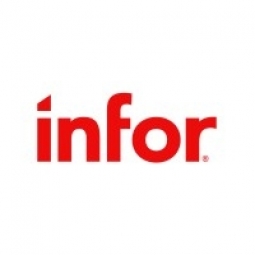Download PDF
Optima Energy Systems Enhances Analytics with Infor Birst

Technology Category
- Platform as a Service (PaaS) - Application Development Platforms
- Sensors - Utility Meters
Applicable Industries
- Buildings
- Cement
Applicable Functions
- Product Research & Development
Use Cases
- Energy Management System
- Time Sensitive Networking
Services
- System Integration
The Challenge
Optima Energy Systems, a leading energy management software provider, was facing challenges with its existing reporting system. The company had built an extensive collection of bespoke reports for its customers, which included large, multi-site organizations like supermarkets, water companies, telecom companies, and universities. However, every new customer required a different report, leading to a messy pile-up of options and settings that became increasingly cumbersome and difficult to support. The original reporting technology was unfamiliar to many, causing Optima Energy Systems to spend a disproportionate amount of time manually building reports rather than focusing on future product enhancements. The company sought to replace its existing reporting capability to improve development efficiency and transform its manual and resource-intensive reporting environment into a customer self-service reporting infrastructure.
The Customer
Optima
About The Customer
Optima Energy Systems, established in 1988, develops and supports advanced software for managing and analyzing energy data. The company's software is used by some of the most significant energy users and consultants in the UK, managing energy data for over 22,000 organizations and 250,000 sites. Optima Energy Systems' core product is an energy management solution that validates bills sent from suppliers to customers. Its customers are large, multi-site organizations like supermarkets, water companies, telecom companies, and universities. The company helps these organizations manage their energy portfolios and control costs.
The Solution
Optima Energy Systems decided to replace its existing reporting system with a modern self-service reporting and dashboard platform. The company shortlisted three different business intelligence vendors and ultimately chose Infor Birst due to its ease of application embedding, ease of development, and scalability as a cloud-based platform. The adoption of Infor Birst allowed Optima Energy Systems to avoid the lengthy process of submitting report specifications and the subsequent design, development, testing, and release work. Customers and their consultants could create reports in a fraction of the time. Optima Energy Systems also aimed to improve the look of its reporting offering with a modern web-based user interface to improve ease-of-use and appeal to future customers. The company also took advantage of Birst's multi-tenant architecture, which significantly sped up the process of onboarding new customers and reduced the administrative costs of maintaining and growing the customer base.
Operational Impact
Quantitative Benefit
Related Case Studies.

Case Study
Energy Saving & Power Monitoring System
Recently a university in Taiwan was experiencing dramatic power usage increases due to its growing number of campus buildings and students. Aiming to analyze their power consumption and increase their power efficiency across 52 buildings, the university wanted to build a power management system utilizing web-based hardware and software. With these goals in mind, they contacted Advantech to help them develop their system and provide them with the means to save energy in the years to come.

Case Study
System 800xA at Indian Cement Plants
Chettinad Cement recognized that further efficiencies could be achieved in its cement manufacturing process. It looked to investing in comprehensive operational and control technologies to manage and derive productivity and energy efficiency gains from the assets on Line 2, their second plant in India.

Case Study
Intelligent Building Automation System and Energy Saving Solution
One of the most difficult problems facing the world is conserving energy in buildings. However, it is not easy to have a cost-effective solution to reduce energy usage in a building. One solution for saving energy is to implement an intelligent building automation system (BAS) which can be controlled according to its schedule. In Indonesia a large university with a five floor building and 22 classrooms wanted to save the amount of energy being used.

Case Study
Powering Smart Home Automation solutions with IoT for Energy conservation
Many industry leaders that offer Smart Energy Management products & solutions face challenges including:How to build a scalable platform that can automatically scale-up to on-board ‘n’ number of Smart home devicesData security, solution availability, and reliability are the other critical factors to deal withHow to create a robust common IoT platform that handles any kind of smart devicesHow to enable data management capabilities that would help in intelligent decision-making

Case Study
Commercial Building Automation Boosts Energy Efficiency
One of the challenges to building automation is the multitude of non-interoperable communications protocols that have evolved over the years. Buildings have several islands of automation. Bridging the islands of different automation without losing the considerable investment in each specialized control network is the main focus in this solution.






